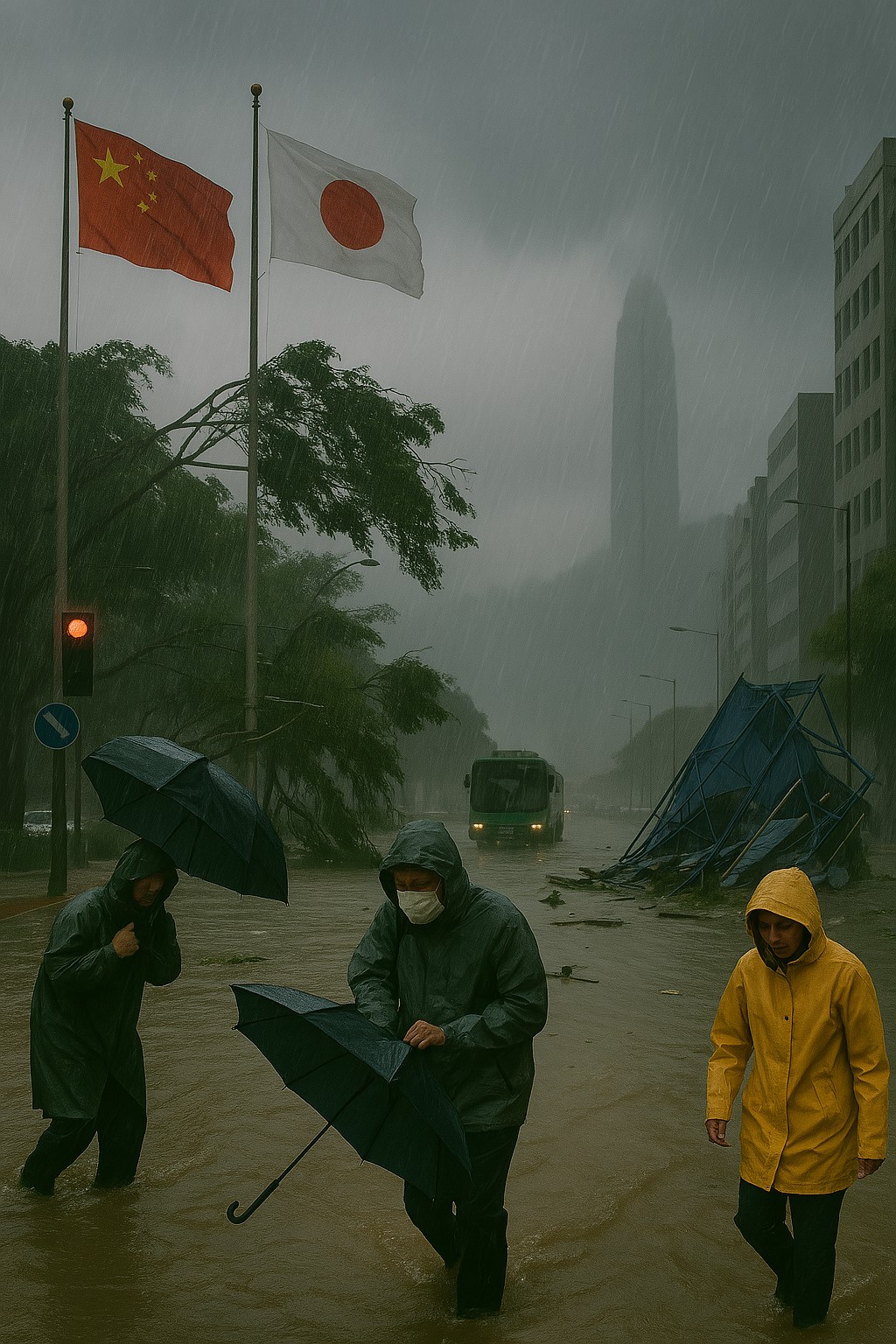
Typhoon Wipha tore through East Asia on July 20, battering Hong Kong, southern China, and South Korea with winds exceeding 167 kph, torrential rain, and widespread infrastructure disruption. Though downgraded to a severe tropical storm by evening, the damage exposed critical gaps in emergency coordination and regional strategic resilience.
🌪️ Impact Snapshot
- Hong Kong:
- 400+ flights canceled, 80,000 travelers affected
- 471 fallen trees, collapsed scaffolding in North Point
- 253 people sheltered, 26 treated in hospitals
- T10 typhoon signal hoisted for 7 hours—the city’s highest alert
- Mainland China:
- Landfall near Taishan, Guangdong at 5:50 PM
- 280,000 evacuated across Guangdong
- Flooding in Zhuhai, Zhanjiang, and Macau disrupted transport and power grids
- South Korea:
- 14 dead, 12 missing due to landslides and flash floods
- Emergency services overwhelmed in Gyeonggi and Gangwon provinces
🚨 Systemic Weaknesses Despite decades of typhoon experience, East Asia’s response revealed:
- Fragmented alert systems: Macau and Hong Kong downgraded warnings inconsistently, confusing residents
- Transport paralysis: Public transit, ferries, and airports shut down with minimal contingency planning
- Urban fragility: Dense cities like Hong Kong remain vulnerable to windborne debris and flooding, despite modern infrastructure
📡 Strategic Lens Wipha’s path underscores a more profound concern: climate volatility as a national security threat. The storm’s disruption of trade, travel, and emergency services highlights:
- Overcentralization of logistics hubs (e.g., Hong Kong, Shenzhen)
- Insufficient regional coordination on disaster protocols
- Economic exposure of coastal megacities to climate-driven events
China’s response—swift evacuations and media control—contrasts with South Korea’s overwhelmed local systems. Meanwhile, Japan, spared direct impact, has offered satellite support and emergency aid, reinforcing its role as a stabilizer in regional crises.
As Wipha moves toward Vietnam for a second landfall, East Asia faces a sobering question: can its economic giants withstand the strategic strain of increasingly frequent climate shocks?



